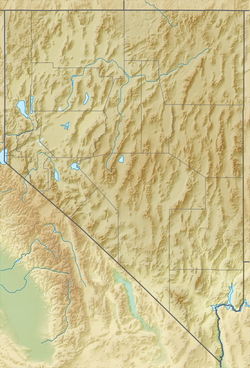| Bird Spring Range | |
|---|---|
 View from the west | |
| Highest point | |
| Elevation | 1,511 m (4,957 ft) |
| Geography | |
| Country | United States |
| State | Nevada |
| District | Clark County |
| Range coordinates | 35°54′29″N115°24′0″W / 35.90806°N 115.40000°W |
| Topo map | USGS Cottonwood Pass |
The Bird Spring Range is a mountain range in Clark County, Nevada. [1]
